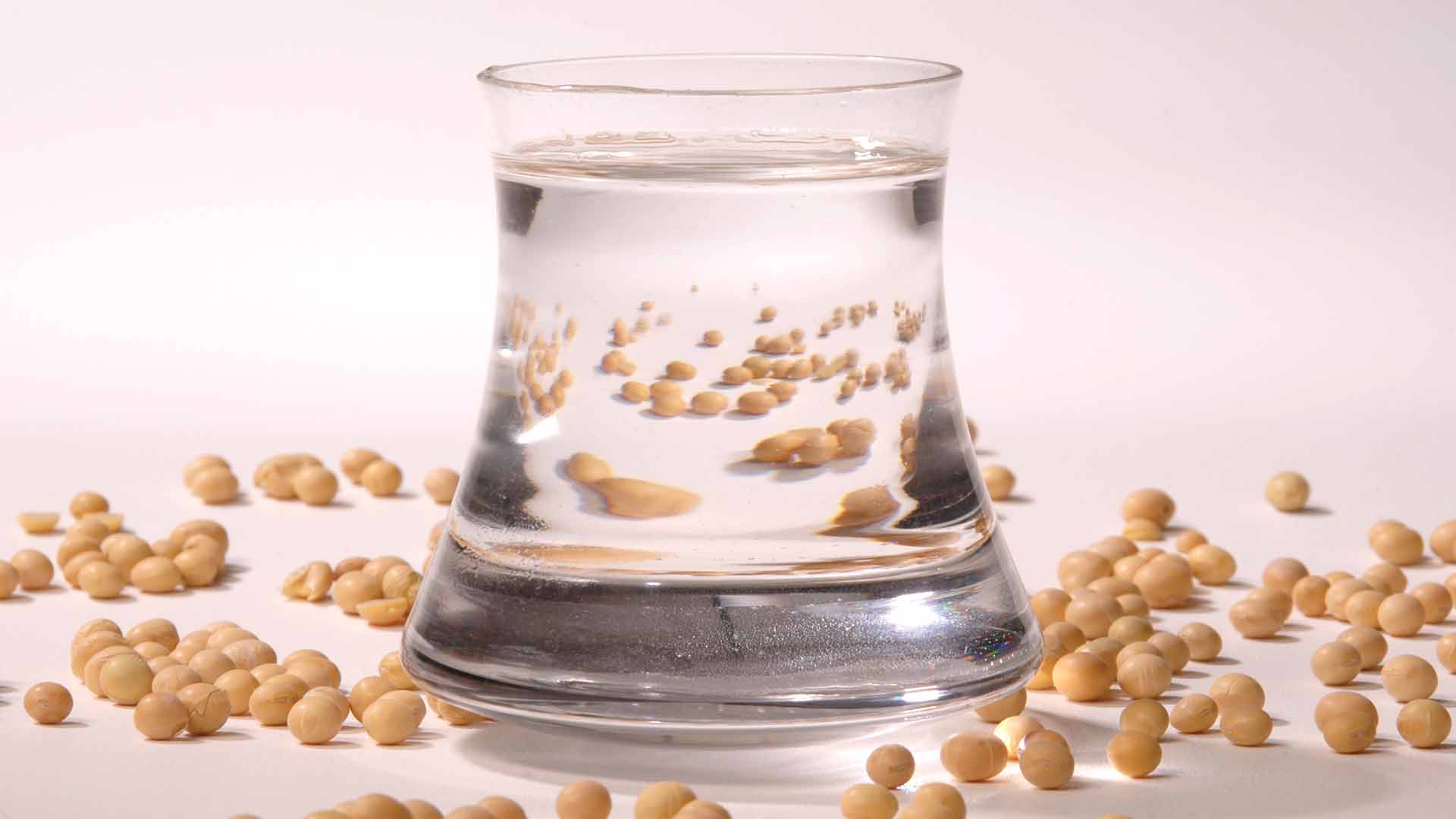It was worth a second look.
A 2007 Kansas study found that adding distillers grains, an ethanol byproduct, to cattle feed could increase the prevalence of E.coli in beef. But updated research finds that’s not true, and adding a soy biodiesel byproduct actually improves the feed’s performance.
AURI decided to retest the Kansas State Univeristy study and Dennis Timmerman, AURI project director, worked with beef cattle nutrition scientists Alfredo DiCostanzo of the University of Minnesota and Jim Drouillard, of Kansas State University, who was part of the original study. The updated two-part trials were conducted in both states.
“We felt that it was important to have both Kansas State and the University of Minnesota look at and retest this issue because of how we feed cattle differently in Minnesota and Kansas,” Timmerman says. “In Minnesota, beef producers feed whole or cracked corn, while in Kansas they feed steam-flaked corn.”
Researchers also tested soy glycerin feed additive as an intervention agent to see if it would lower E. coli 0157-H7. The bacteria is naturally present in cattle, but it can pose a health risk if people consume undercooked meat or unwashed produce.
Trials were conducted at the University of Minnesota’s beef feedlot and research facilities in Rosemont from August 2010 to February 2011. The second set of trials started at Kansas State in April 2011.
Restarting in Minnesota
The two-phased trials started with testing 48 cattle; half already had naturally-occurring E. coli in their gastrointestinal track. Trial rations of zero and 10 percent glycerin and with zero and 35 percent distillers grains were fed to the cattle, with a total of four combinations. The ration percentages were chosen because of recent studies showing that more than 10 percent glycerin can negatively affect cattle performance and 35 percent distillers grains is commonly included in feed. All rations included steam-flaked corn, hay and protein, vitamin and mineral supplements.
Test cattle were fed individually for 172 days, fecal sampled and weighed about every 14 days and at harvest. As the feeding trial continued, E. coli populations declined and disappeared with all four ration combinations, Timmerman says. The trial was repeated with the same results.
Minnesota research confirmed that distillers grains do not cause E. coli populations to increase and that glycerin can successfully replace up to 10 percent of corn in steam-flaked corn rations. “The findings were really interesting,” DiCostanzo says. “I expected to retain at least the 50 percent (E.coli) infection rate but it actually all cleared up.”
“We discovered something we weren’t looking for with the glycerin,” Timmerman says. “We started feeding it to some of the cattle in the trial thinking it might help lower E. coli populations and also found that it greatly increased overall cattle performance.” DiCostanzo says that while distillers grains can cause cattle to have a slightly less efficient rate of gain, glycerin counters by improving performance.
Trials take 2
The trial’s second phase involved inoculating 28 young Holstein steers with high E. coli levels. Researchers evaluated the difference between steam-flaked and dry-rolled corn and zero and 10 percent glycerin. All cattle were fed distillers grains, hay and supplements.
Researchers hypothesized that feeding glycerin would have no effect on E. coli but feeding steam-flaked corn would result in a higher prevalence. Calves in an isolation barn were fecal sampled. Samples with E. coli were plated and incubated to measure actual amounts of the bacteria.
There was no significant difference in fecal E. coli shedding with different diet treatments and the bacteria significantly decreased over time in all the test groups. Researchers concluded that shedding artificially-inoculated E. coli. was not affected by soy glycerin or corn-processing methods.
The trials were duplicated in Kansas and results are not yet complete, but Timmerman says “the glycerin results are looking fairly consistent to what DiCostanzo found in the Minnesota trials.” The research suggests other environmental factors may impact E. coli populations and more research will have to be done, Timmerman says.
AURI staff, DiCostanzo and other University of Minnesota researchers are evaluating cattle carcasses and beef from the first trial to see if feeding glycerin has an effect. A similar test, feeding glycerin to swine, found meat and fat quality improved, Timmerman says. He expects beef trials will yield similar results.
DiCostanzo says distillers grains can increase fatty acids in meat that promote oxidation (rancidity), which can reduce shelf life, but glycerin could potentially reduce the negative effects of those fatty acids.
“We didn’t realize that feeding glycerin was going to have that kind of impact; we were very surprised by the outcomes,” Timmerman says. “Glycerin is a benefit to beef producers; cattle perform better and overall production and performance increase.”
DiCostanzo said he was not shocked that studies didn’t find a correlation between corn rations and E. coli. But he was surprised by the positive results of replacing corn with glycerin and hopes producers will incorporate them into their feeding rations.
PROJECT SNAPSHOT
AURI and feed trials
AURI project director Dennis Timmerman worked with beef cattle nutritionists from Kansas State University and the University of Minnesota to test feed with added distillers grains and glycerin – both products of renewable fuel processing.
Idea to opportunity
Retest an earlier Kansas State study that showed adding distillers grains to cattle feed could increase prevalence of E.coli in beef.
Outcome
Not only was no link found between distillers grains and e.coli, the updated two-part trials showed glycerin added to feed improves cattle weight-gain efficiency.
